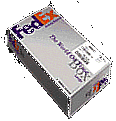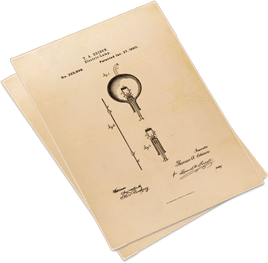The idea of branded services is relatively new in “trademark” history. It took technological advances in transportation and especially communication to make it so that services of certain character could be provided generally to a mass market of consumers across a wide area. Until the 20th, even banks and insurance companies were local service providers. In 1946 U.S. trademark law recognized marks used in connection with the provision of services in interstate commerce should be protected to the same extent as marks put on goods. Even more than half a century later, however, the law is still developing, as questions remain about what constitutes a real service and what determines whether a service moves in interstate trade. In spite of the questions, however, no one disputes that protecting a mark identifying the services rendered by one provider throughout the country and the world is every bit as important to consumers in the marketplace as trademark used on goods. And so service brands such as Geico? for insurance services and Meineke? for auto repair services have the protection of trademark law and have become widely known to consumers and trusted by many for the particular character and quality of those services.
Trademark versus Service Mark
In order to provide some guidance about whether the use of a particular mark and those similar to it will cause consumer confusion, marks are “classified” in various ways. The first distinction made is between marks used on goods and those used with services. Strictly speaking, a trademark is a mark affixed to goods that are moved in commerce:
Trademark:

…and a service mark is a mark that is used in connection with services that are provided in commerce:
Service Mark

Certain marks may be both trademarks and service marks if they are used with both goods and services. A trademark may be “affixed” to goods by being imprinted on them, by being attached to them — for instance, on labels or tags — or by being imprinted on the packaging in which the goods are sold. (Sometimes the packaging itself may be or become a trademark.) A service mark is used “in connection with” the services it identifies, usually by appearing in informational and instructional literature and in advertising, but it may also appear in other forms, such as on uniforms worn by providers of the services, or on vehicles used to deliver the services.

Classification of Goods and Services
In addition to the broad distinction made between trademarks and service marks, these marks are further categorized into one or more of a number of “classes” of goods and services, according to the kind of goods or type of services with which the marks are used. Since 1973, the United States, joining most other nations, has used the “International schedule of classifications of goods and services.” Along with the international classes, however, many countries have — and some continue to maintain, internally — their own system of trademark classification. The U.S., for example, continues to include in trademark records references to the U.S. schedule of classes used prior to 1973, but only as an aid to searching trademark records; the officially recognized classes are the international classes.
The international class descriptions established by the World Intellectual Property Organization are given in Title 37 of the Code of Federal Regulations, 37 C.F.R. 6.1. Under this schedule, there are 34 classes of goods and 8 classes of services.
See the list of short titles (names) of these classes.
The Trademark Manual of Examining Procedure (TMEP) includes some help in determining the proper classification of goods and services in Section 1401. Further guidance is available from the searchable Trademark Acceptable Identification of Goods and Services Manual on the U.S. Patent and Trademark Office Web site.


